id-art/iStock/GettyImages
While Asian cuisine is centered largely on rice, it is not the only grain used in traditional dishes. Pressed barley, called “oshimugi” in Japanese, is often either added to rice or prepared on its own and substituted for rice. Pressed barley is processed much the same way that rolled oats are and may also be used in addition to, or in place of, oats in cereals, breads and cookies. Pressed barley does not require rinsing the way some forms of rice do, but it does have to be soaked to help soften the texture.
Preparing the Barley
Place the amount of pressed barley you intend to cook into a large bowl. Cover it completely with warm water, adding about 1/2 inch extra. Soak the barley for 15 to 30 minutes or until it is soft when squeezed between your thumb and the fingernail of you index finger. Drain the soaked barley in a mesh strainer.
Fill a large pot with twice as much water as you have soaked barley. Salt the water generously and bring it to a rolling boil over high heat.
Add the soaked barley, being careful not to splash yourself with the boiling water. Stir the barley with a wooden spoon to make sure that no flakes stick to the bottom.
Cover the pot and turn the heat down to low. Cook the pressed barley for 20 minutes without lifting the lid. Check the barley for doneness by carefully tasting it. Pressed barley should have a soft texture like rice, but not mushy like oatmeal.
Fluff the pressed barley flakes with a fork and season with salt, pepper and whatever herbs and spices you prefer.
Serving the Barley
The finished barley can be used in most of the same ways as any cooked grain. You can add savory herbs and vegetables to turn it into a pilaf, or let it cool and then fry it, fried-rice style, with a selection of vegetables and slivers of meat. Cooked oshimugi can be used in grain-based salads as a replacement for bulgur and other grains, or simmered in a skillet full of broth to make a barley risotto. It's also handy in baking: You can add it cooked or uncooked to your yeast bread as a fiber booster, or even use it in place of rolled oats in your favorite cookie recipe.
Related Articles

How to Cook Soaked Hulled Barley

How to Cook Couscous With Chicken Broth

How to Use Soaked Bulgur Wheat
Can You Replace Bulgur With Barley?
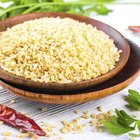
Bulgur Vs. Farro
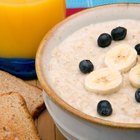
How to Eat Buckwheat Raw

How Does Measuring Dry Quinoa Compare ...
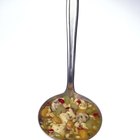
How to Cook Pearl Barley on the Stove

How to Cook Brown Basmati Rice

Does Rice Taste Different Depending on ...

Barley Nutrition Information

How to Cook Bulgar Wheat in the ...

How Long Do I Cook Vermicelli?

How to Make Sticky Rice Recipe

Is Teff Flour Gluten-Free?
How to Cook Grits in the Microwave
Cooking Instructions for Cracked Wheat
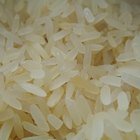
How Long Can I Store Uncooked Jasmine ...

How to Cook Khus Khus
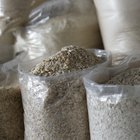
How to Cook Rice Flakes
References
Tips
- Use pressed barley in risotto recipes for a fresh take on a classic dish.
Warnings
- Do not overcook pressed barley because it can become tasteless and mushy.
Writer Bio
Brynne Chandler raised three children alone while travelling, remodeling old homes, taking classes at the Unioversity of California Northridge and enjoying a successful career writing TV Animation. Her passions include cooking, tinkering, decorating and muscle cars. Brynne has been writing fun and informative non-fiction articles for almost a decade. She is hard at work on her first cookbook, which combines healthy eating with science-based natural remedies.